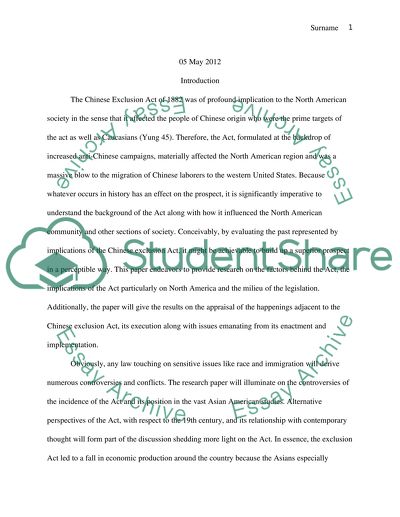Cite this document
(“The 1882 Chinese Exclusion Act Research Paper Example | Topics and Well Written Essays - 2000 words”, n.d.)
Retrieved from https://studentshare.org/history/1398605-the-1882-chinese-exclusion-act
Retrieved from https://studentshare.org/history/1398605-the-1882-chinese-exclusion-act
(The 1882 Chinese Exclusion Act Research Paper Example | Topics and Well Written Essays - 2000 Words)
https://studentshare.org/history/1398605-the-1882-chinese-exclusion-act.
https://studentshare.org/history/1398605-the-1882-chinese-exclusion-act.
“The 1882 Chinese Exclusion Act Research Paper Example | Topics and Well Written Essays - 2000 Words”, n.d. https://studentshare.org/history/1398605-the-1882-chinese-exclusion-act.


